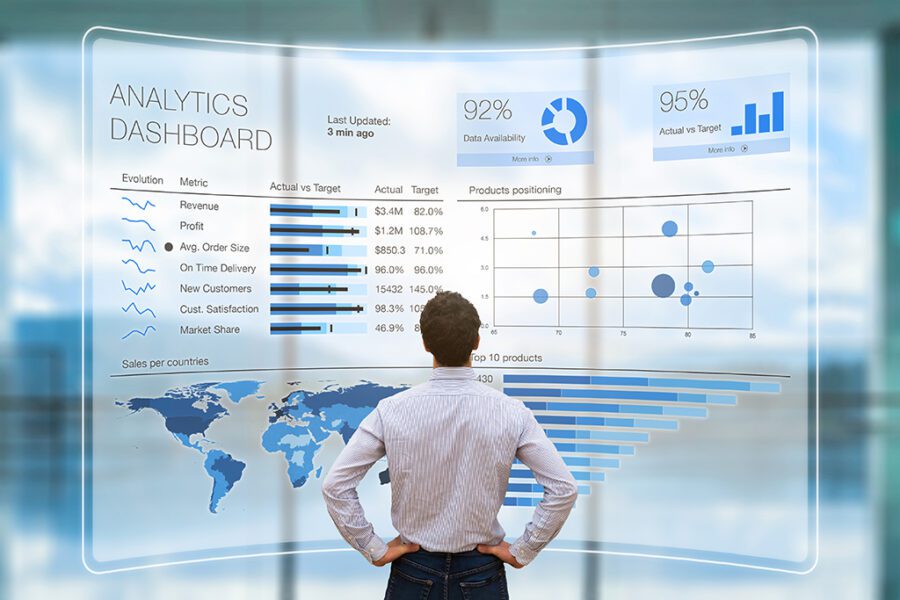Data is the most important resource in modern day business. It can make or break an organization. Power BI, Microsoft Fabric and other powerful tools can be used by companies to unleash the full potential of their data. These platforms are at the heart of business intelligence and when used in conjunction with Azure Data Factory they become a powerful force for data analytics and making decisions.
Power BI, Your Business Intelligence Companion
Power BI, a product of Microsoft, is a complete business intelligence tool that is designed to aid organizations in analyzing and share the insights they gain from their data. Power BI allows users to build interactive reports and dashboards and transforms raw data into actionable insights.

No matter if you’re a tiny startup or a major company, Power BI adapts to the needs of your business. It integrates seamlessly with various data sources which makes it much easier to merge data from several systems and databases. With its simple drag-and-drop interface even non-technical users can quickly build relevant reports and analyses.
The Power BI platform supports real-time processing of data, ensuring you’re working with the most current data. It has a broad range of visualisations, which allows users to present data in a digestible and appealing way. It is important to communicate and collaborate on reports. This can improve decision-making within your company and encourage a data-driven environment.
Microsoft Fabric Weaving Data to provide excellence
Microsoft Fabric is an underpinning framework which connects and manages the data of various Microsoft services. Fabric is the layer which transforms your data into an easily accessible and usable entity. This lets businesses gain insight fast.
Microsoft Fabric is the foundation of data integrity and consistency in a world where businesses are faced with ever-growing volumes of data. Microsoft Fabric works with a range of services, from Azure Data Lake Storage, Azure SQL Data Warehouse and Power BI. This integration ensures that data is flowed smoothly and that data can be drawn from diverse sources.
Microsoft Fabric excels at data transformation. It is a tool to manage data, make it ready for analysis and to ensure that it adheres to the policies for data governance of your business. Microsoft Fabric is an infrastructure that will ensure your data is correct and reliable for analytics.
Azure Data Factory – The Gateway to Data Transformation
Azure Data Factory is another essential component in the modern business intelligence landscape. This cloud-based service enables you to manage and plan data-driven processes. Azure Data Factory provides meaningful insights through orchestration of data movement and transformation.
Azure Data Factory’s ability to connecting with different data sources is one of its primary advantages. Data can be integrated seamlessly, whether it is on-premises, cloud-based or both. This will give you a comprehensive view of your entire data ecosystem, regardless of where your data is. The platform supports batch processing and real-time data streams and big data analytics, making it suitable for a broad range of scenarios.
Azure Data Factory provides a visual interface to simplify the process of creating data pipes. It is easy to create and schedule the workflow of data, even if you’re not an expert in coding. This allows users to be in charge of data integration and self-service data preparation.
Power BI with Microsoft Fabric, Azure Data Factory, and Power BI
If Power BI and Azure Data Factory when combined to create a formidable trio that will change the way you analyze data. The way they work together:
1. Data Integration: Azure Data Factory can connect to many data sources to ensure your data is available. This data integration capability feeds Microsoft Fabric which orchestrates data across multiple services. This ensures that the data you have well-structured, cleaned, and ready to be analyzed in Power BI.
2. Data Transformation: Microsoft Fabric is a essential component of data transformation. It lets you transform your data according to your needs. Fabric is an effective tool to transform data, data cleansing and data wrangling.
3. Data Visualization: Once your data is refined and ready, Power BI takes over. It allows you to create visually appealing dashboards and reports which make data that is complex easier to comprehend. You can share the data with your colleagues, to encourage data-driven decision-making.
4. Scalability: Azure Data Factory can grow to accommodate increasing data volumes. Combining Power BI with Microsoft Fabric will make sure that your data is constant and reliable, even when your business grows.
5. Power BI and Azure Data Factory provide real-time insight, which can be crucial to make quick decisions.
We also have a conclusion.
Business intelligence is evolving rapidly and organizations must harness the power of data in order to remain competitive. Power BI, Microsoft Fabric and Azure Data Factory are a powerful trio that can assist you in taking your company intelligence to new levels. The trio of tools can assist you create stunning visuals, improve data consistency and improve processes. Discover the power of data with business intelligence.